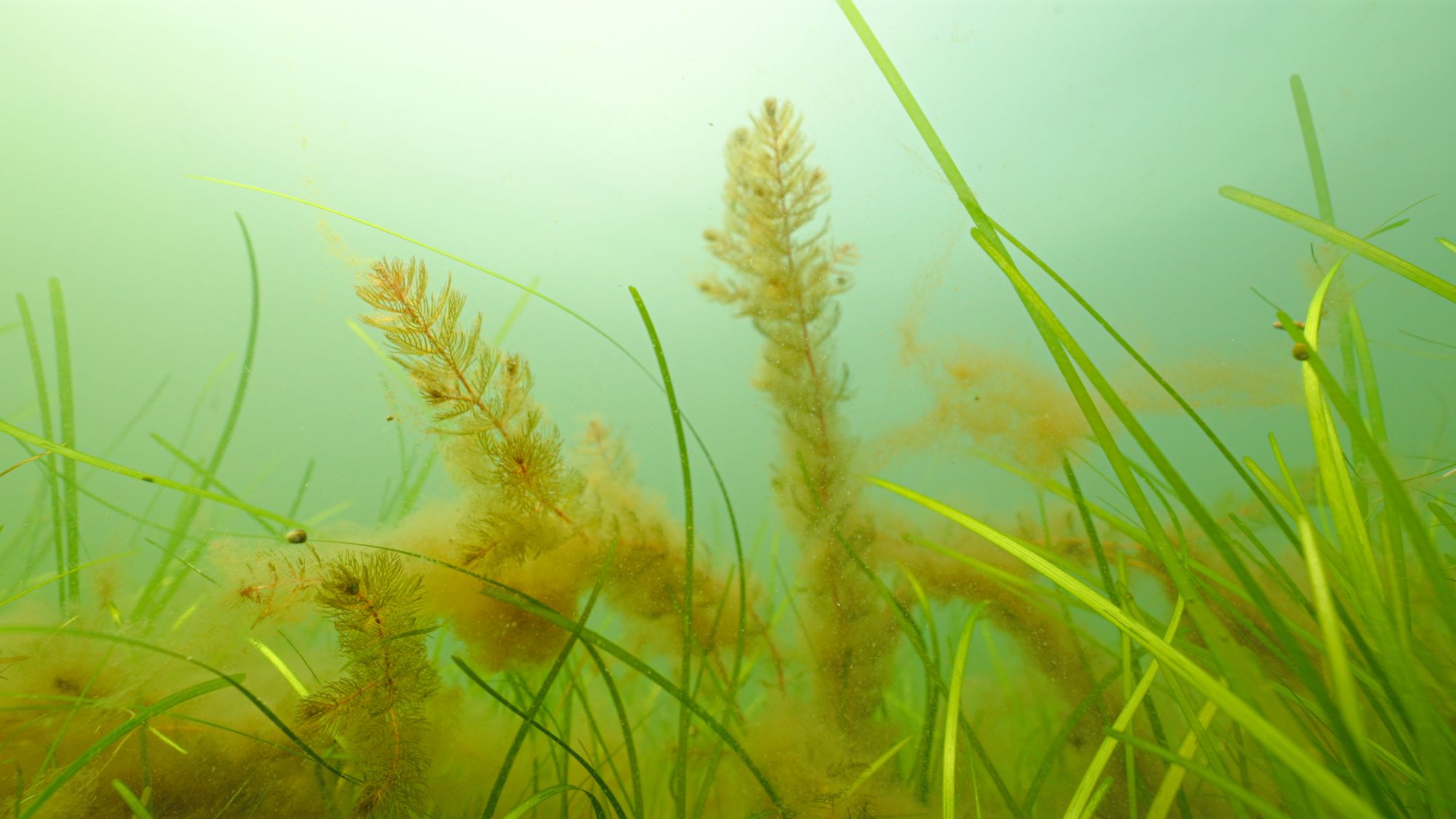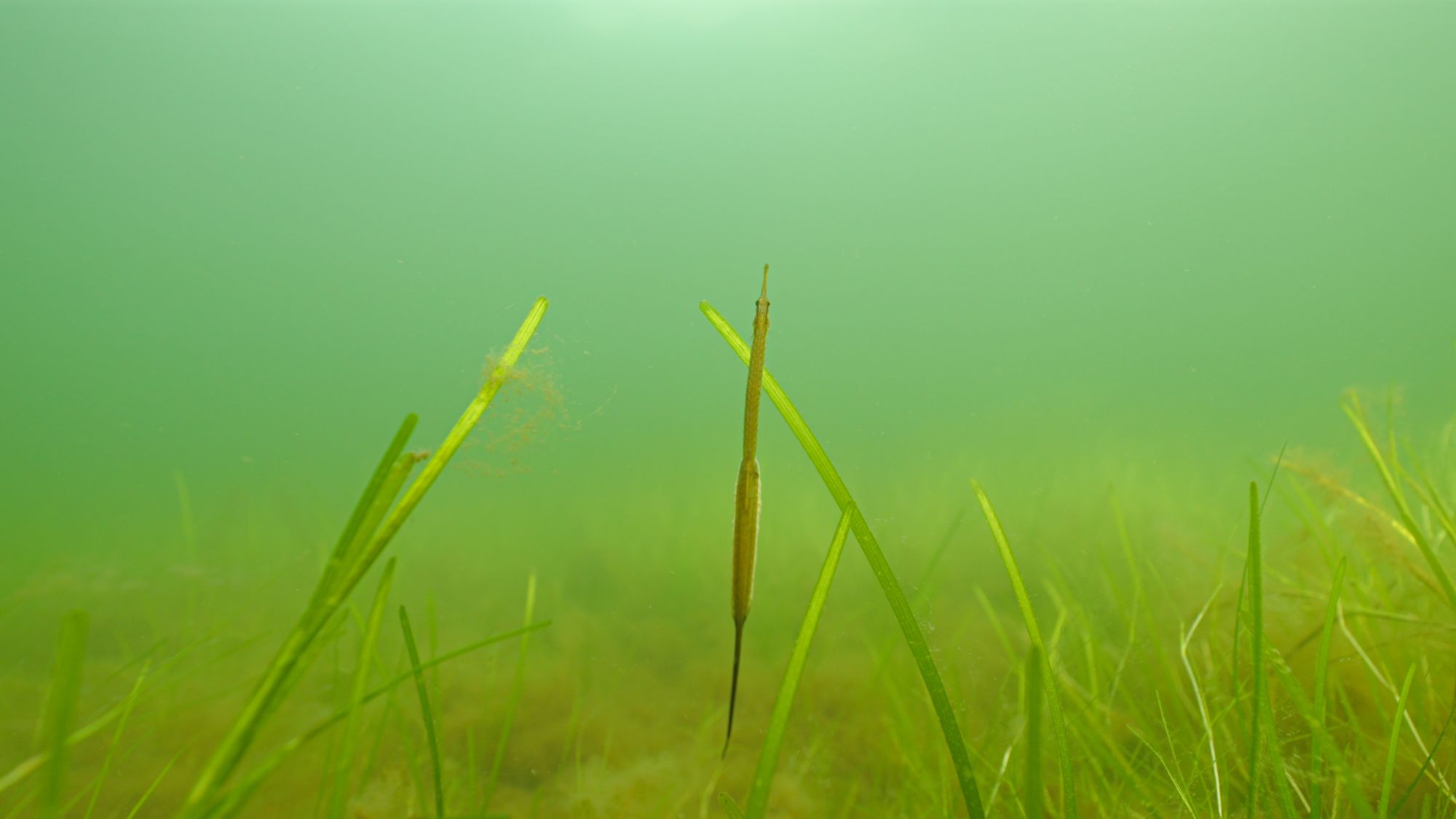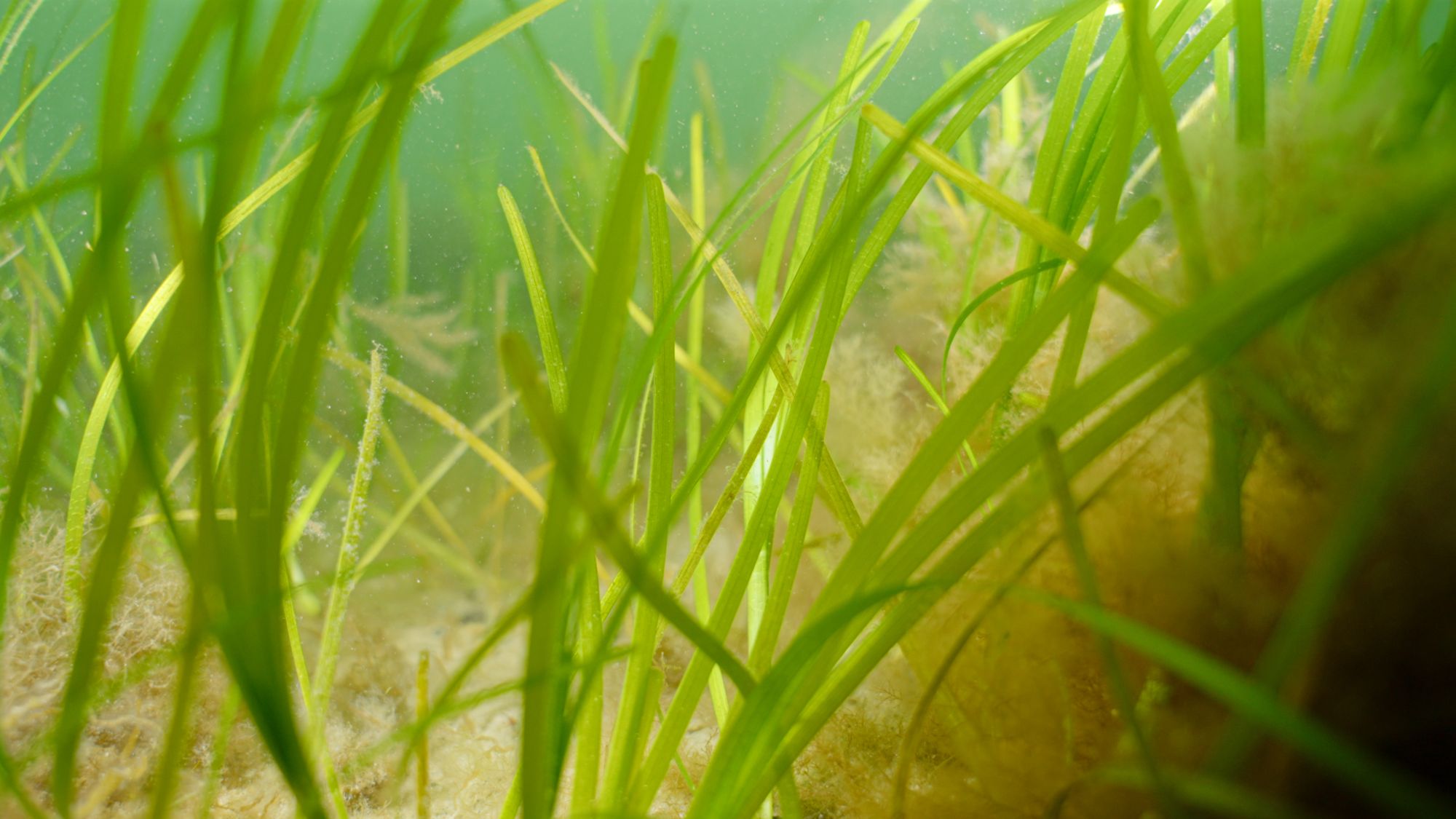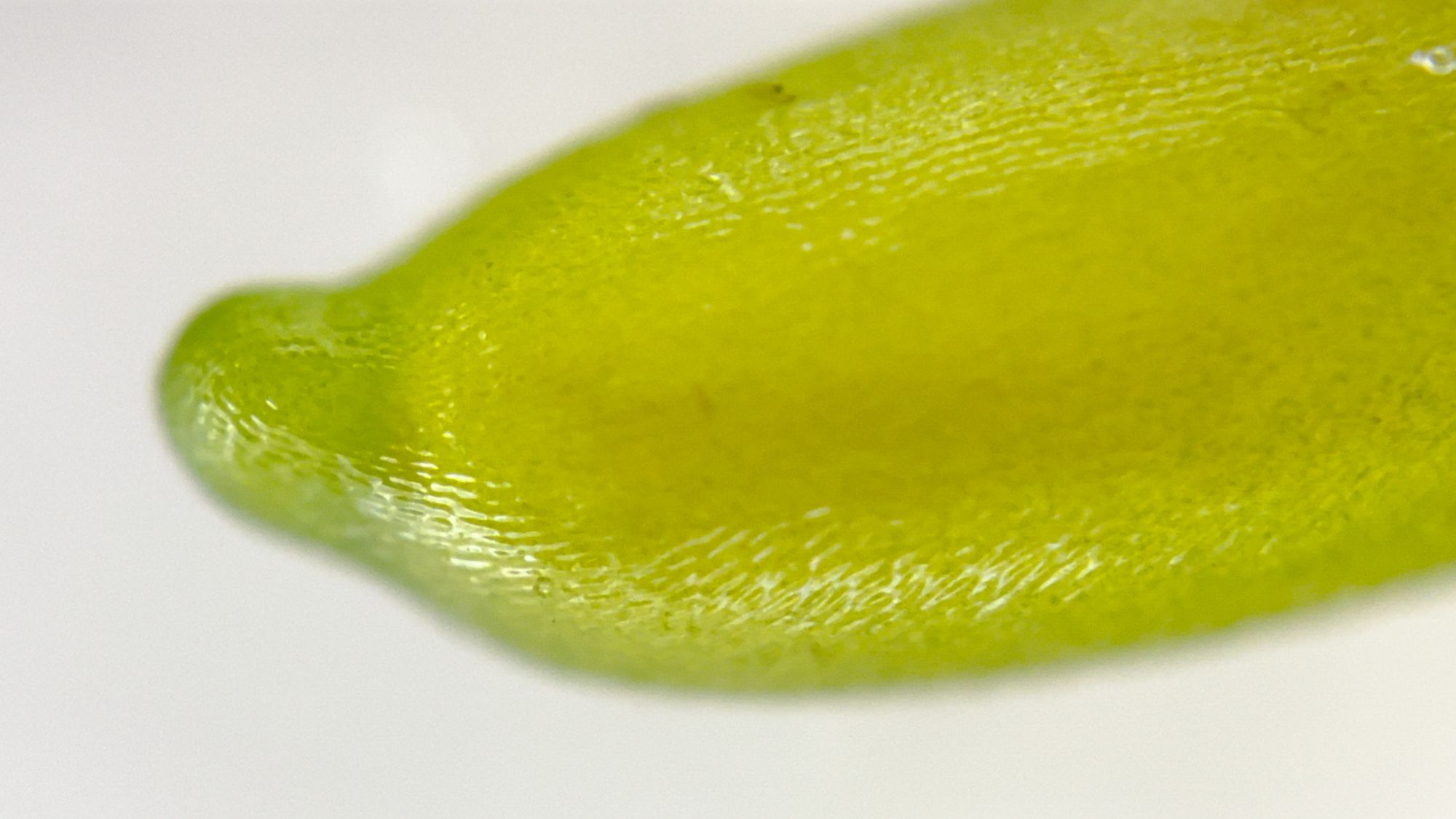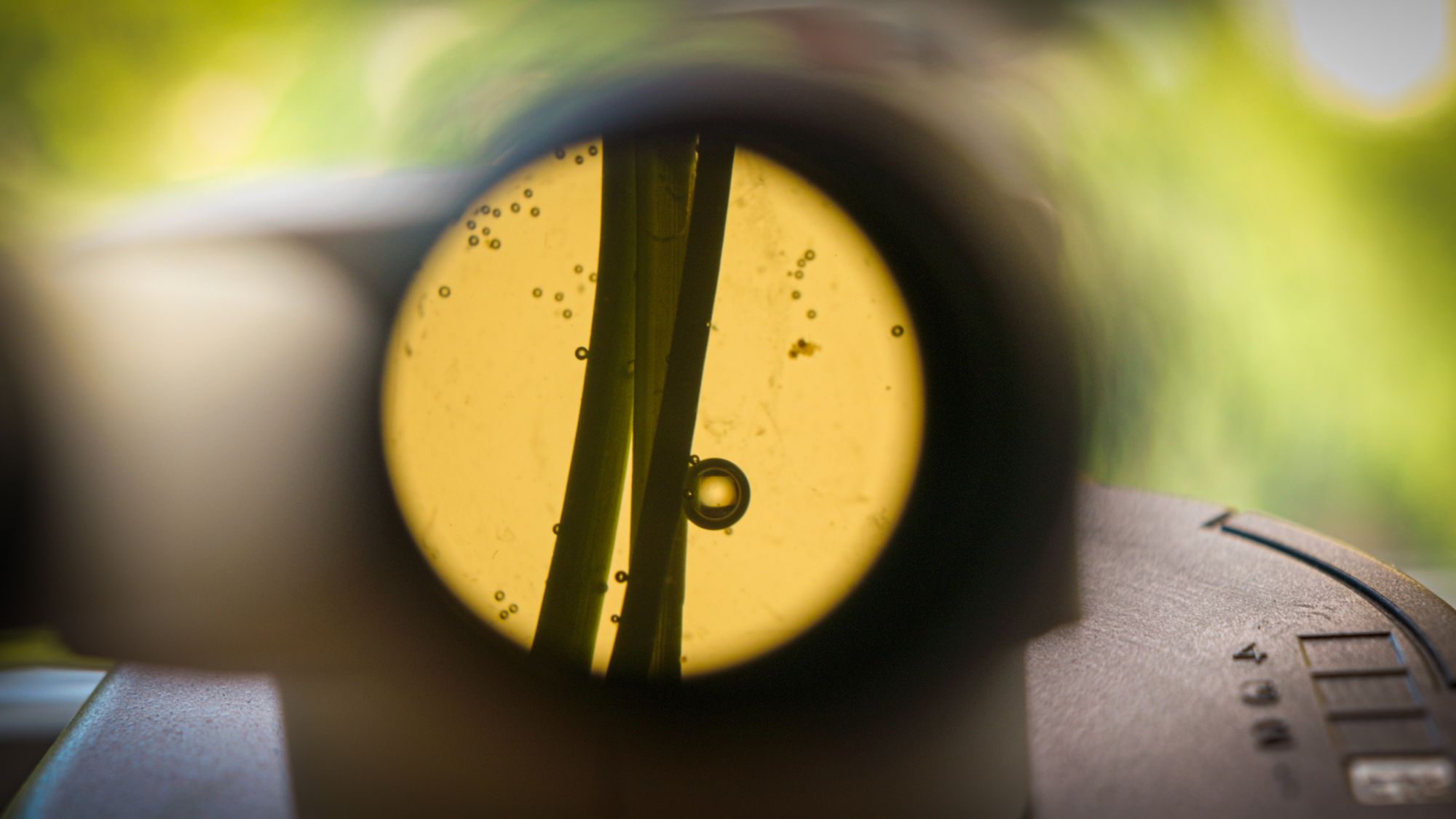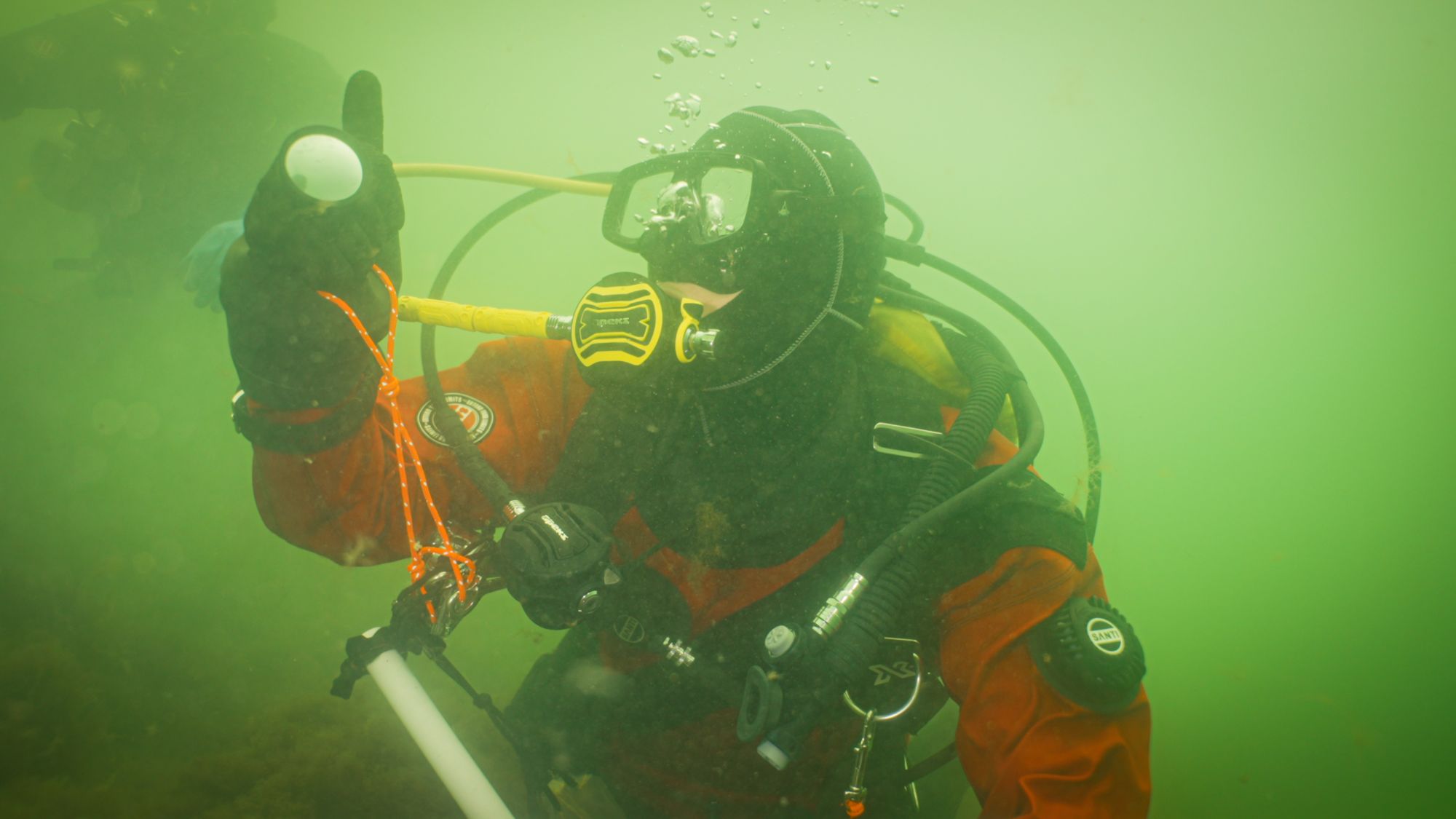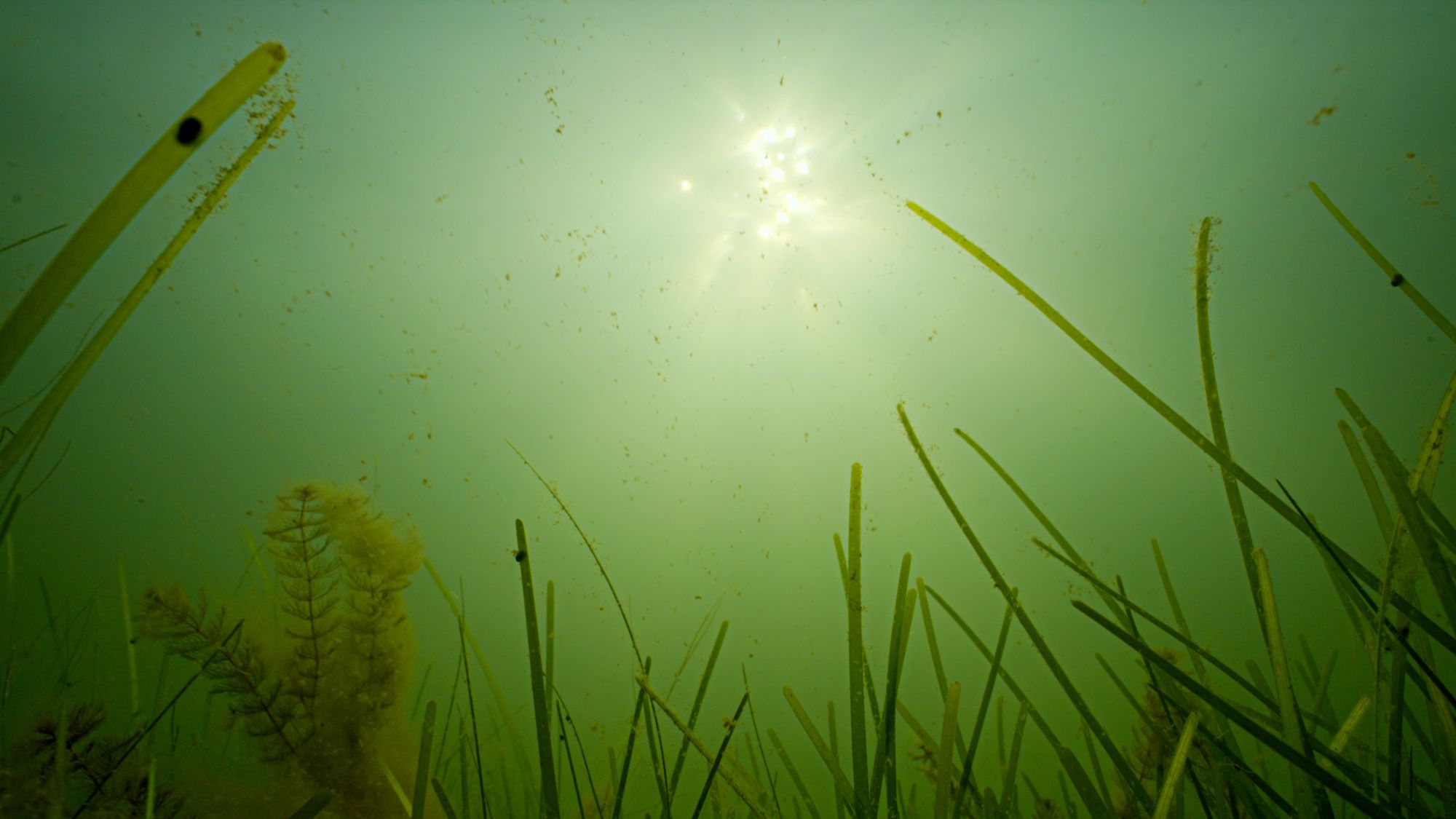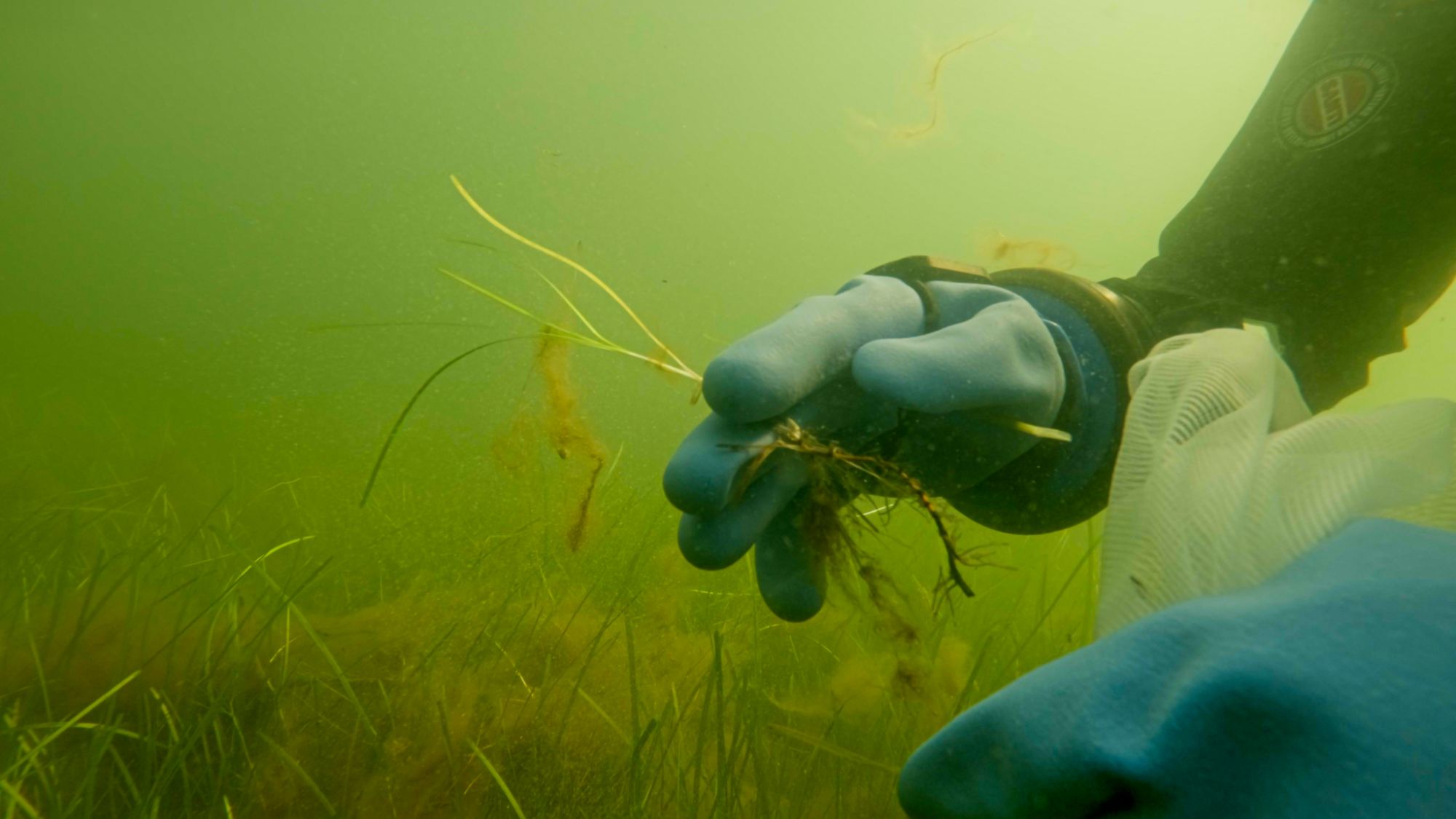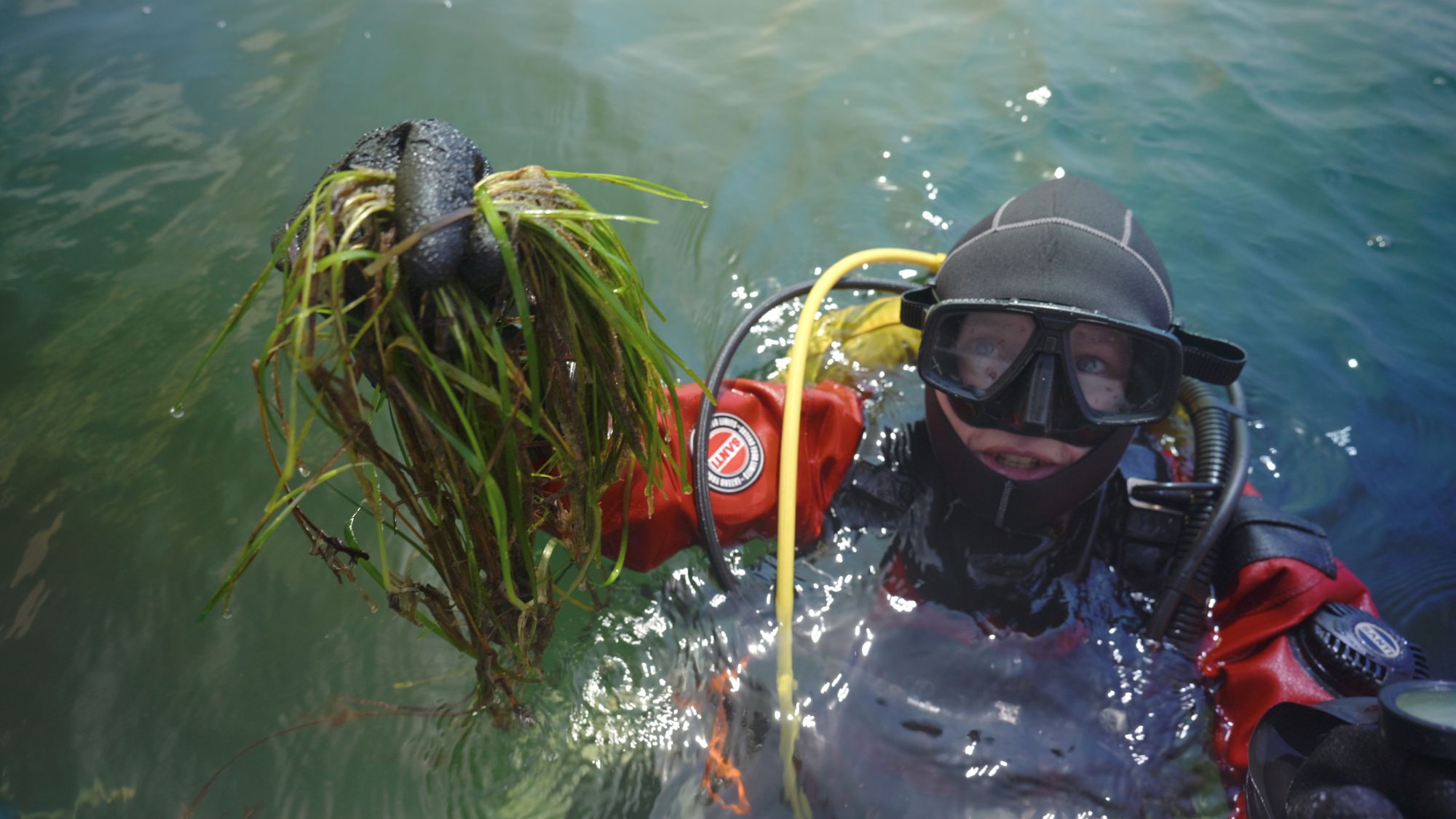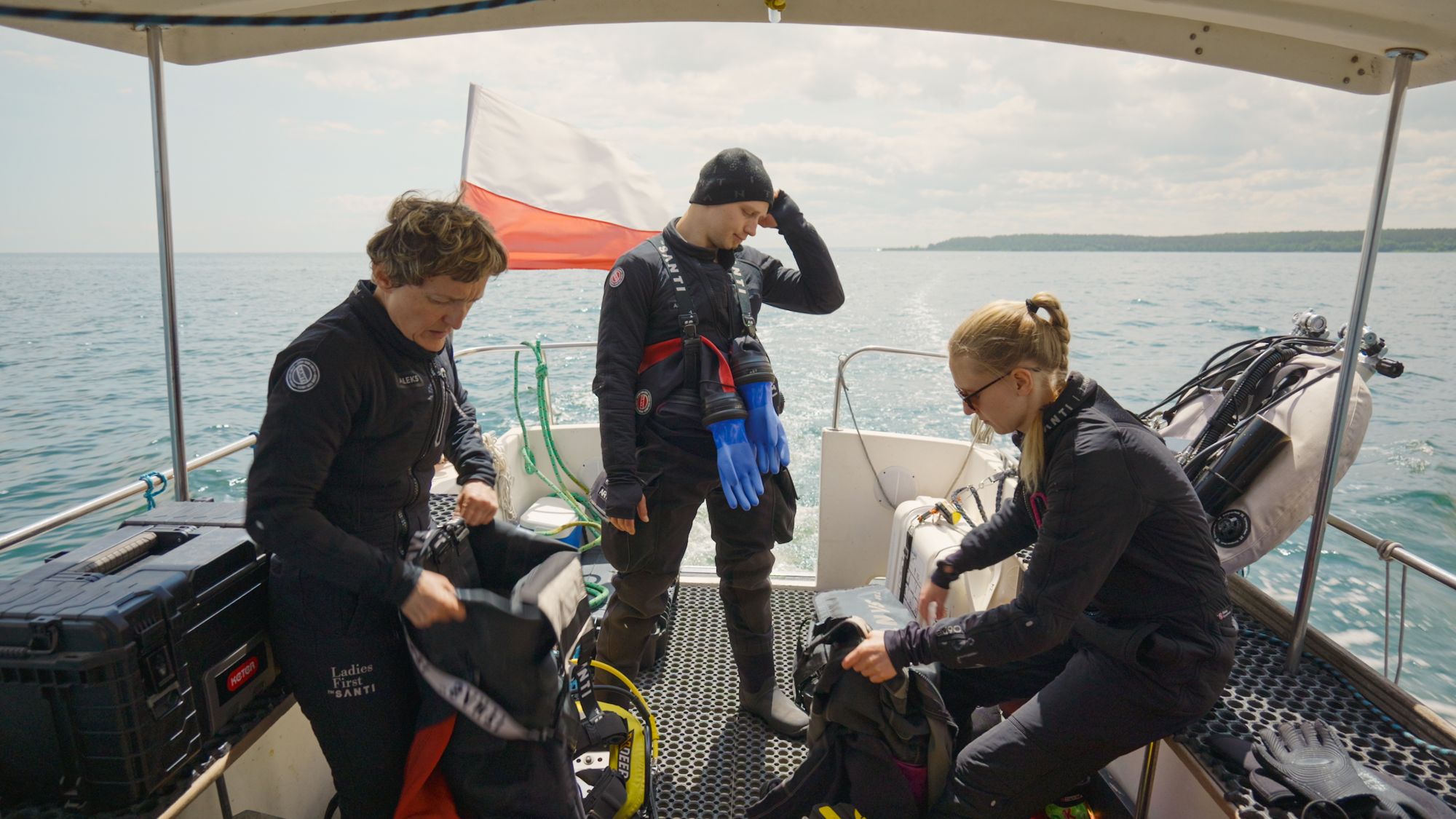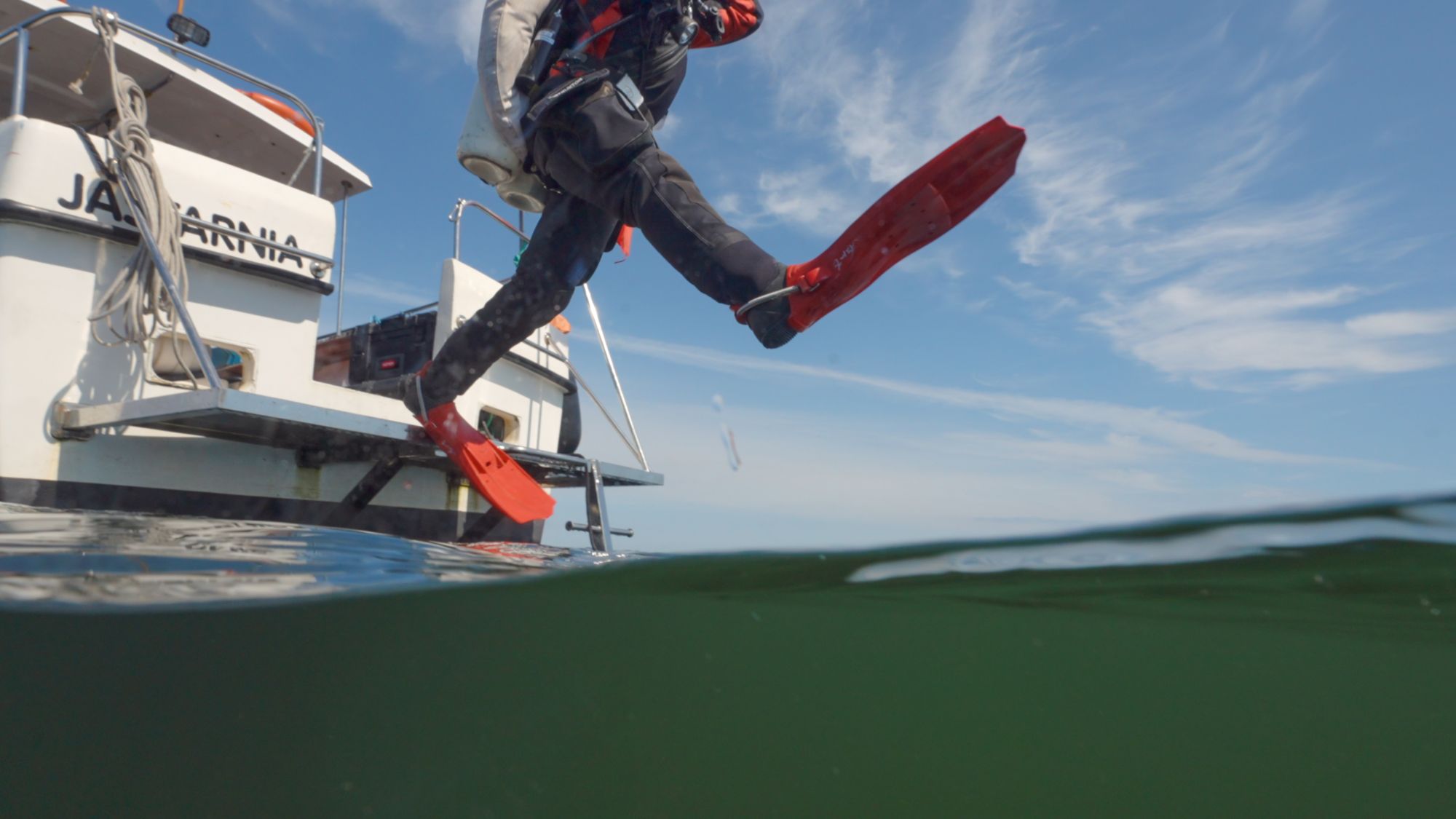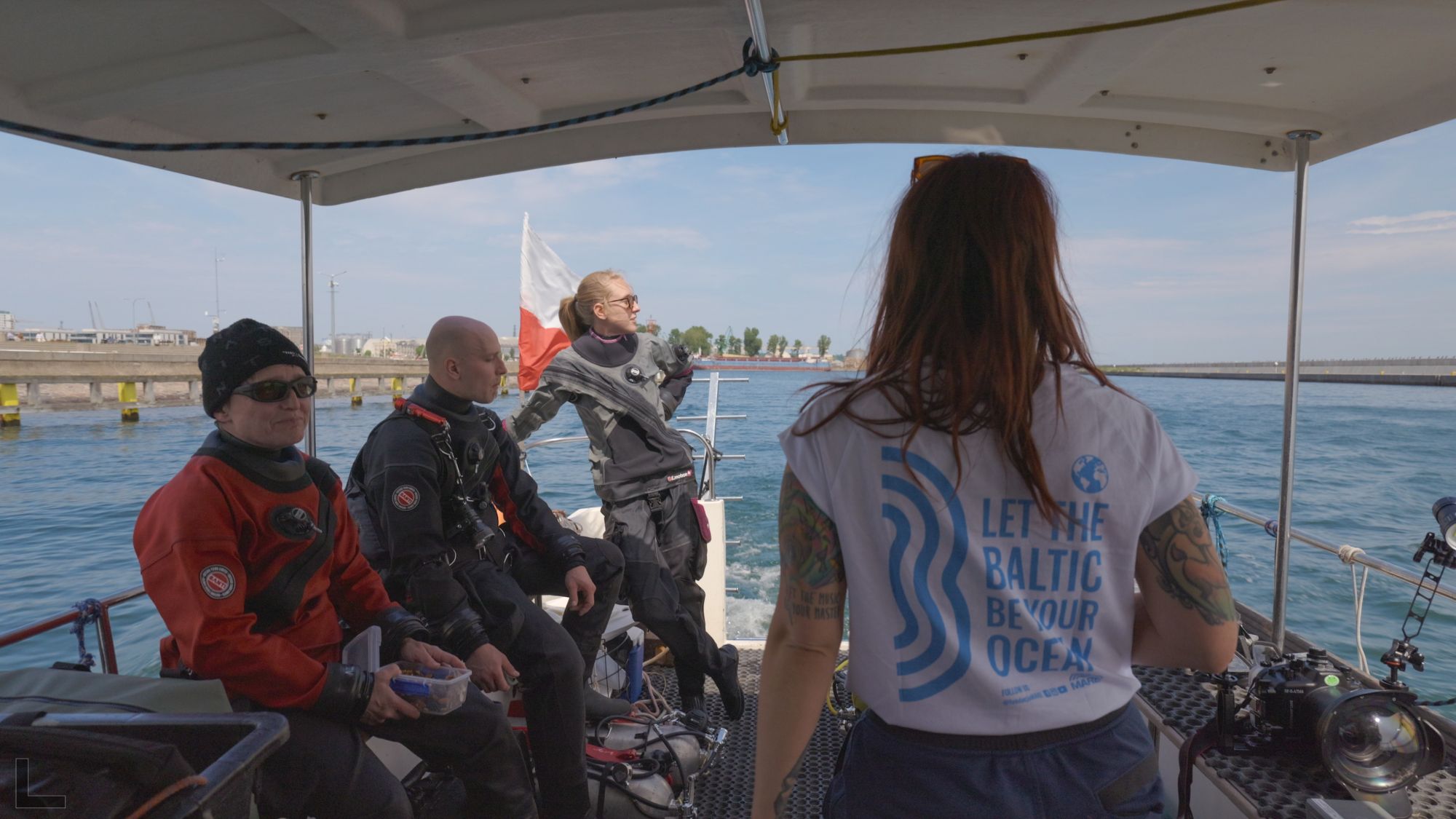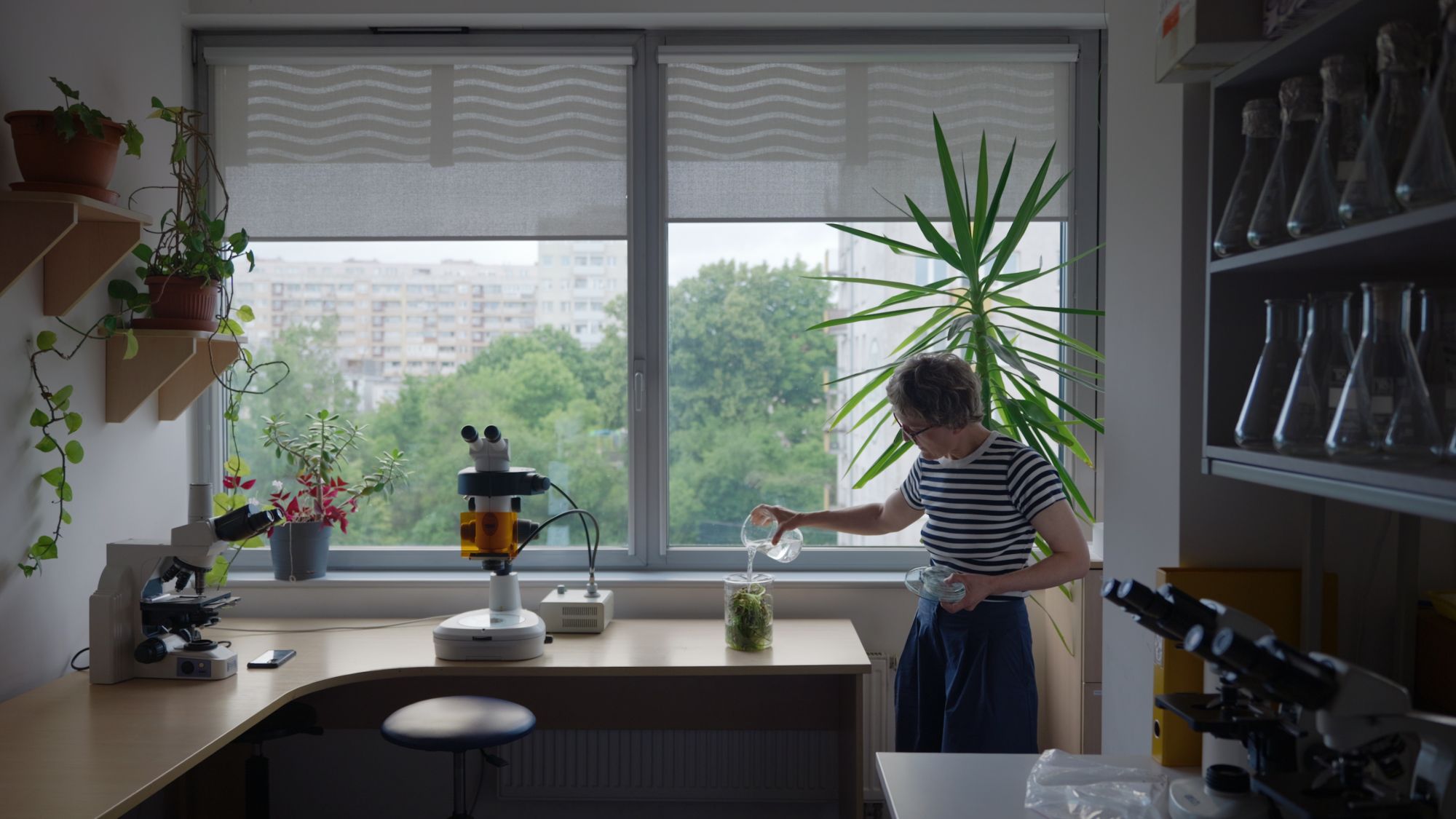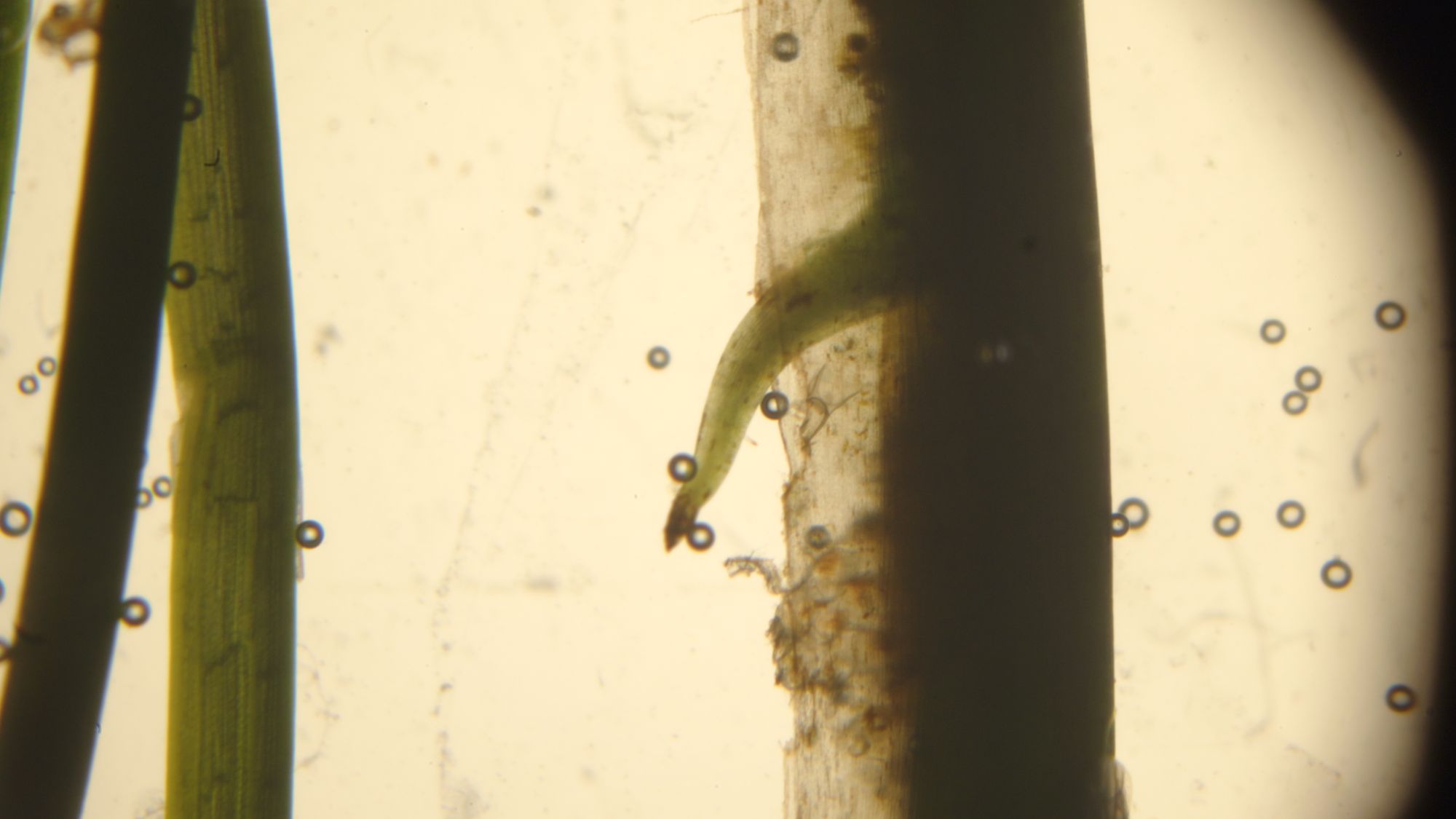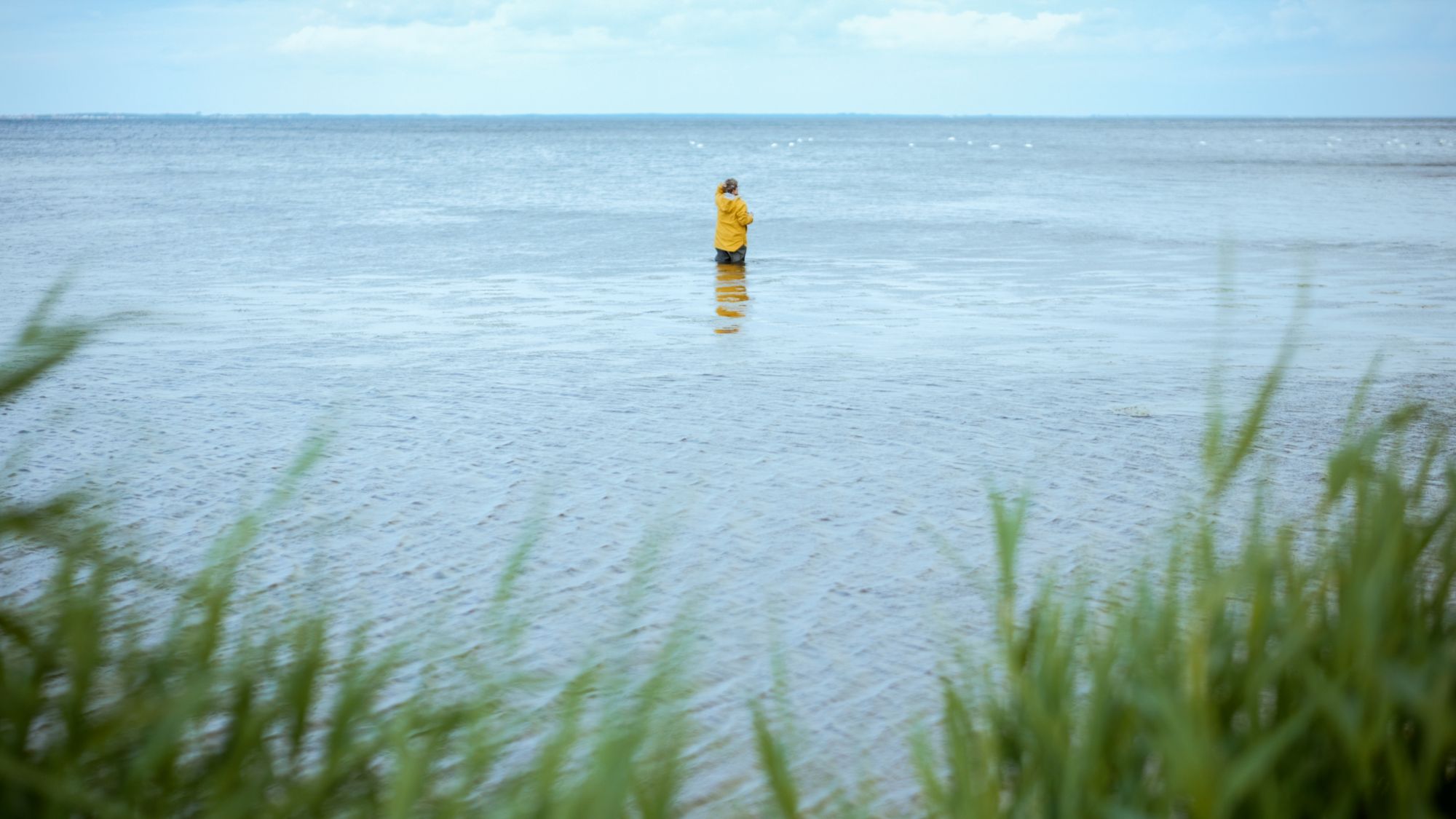
Underwater meadows
Underwater meadows of the Baltic Sea
The MARE Foundation, in cooperation with the University of Gdańsk, is carrying out
the project “Underwater meadows: Reintroduction of eelgrass in Puck Bay.”
The goal of the project is to support the regeneration of eelgrass meadows (Zostera marina)
in the areas of Puck Bay where they once naturally occurred.
Underwater meadows are an exceptionally valuable marine ecosystem that plays an important ecological role. In the Baltic Sea, these meadows are formed primarily by the eelgrass Zostera marina, but also by other species of marine vascular plants such as Stuckenia spp., Ruppia maritima, Zannichellia palustris, Chara spp.. They are often accompanied by various algae, including Pylaiella littoralis, Ceramium spp., Ulva spp., and Chara spp., as well as increasingly common species such as Furcellaria lumbricalis and Fucus vesiculosus.
Marine plants share many similarities with those found on land – they produce seeds, develop root systems that anchor them to the seabed, and even bloom. Their growth depends on the availability of light, which is essential for photosynthesis. Consequently, the depth at which they occur is determined by how far sunlight can penetrate the water column. The shallow waters of Puck Bay therefore provide an ideal environment for their growth and development.
However, underwater meadows are also a fragile ecosystem. Their presence and condition serve as indicators of environmental quality. Since the 1960s, water quality in the Baltic Sea has significantly deteriorated, causing a decline of up to 80% in the area covered by underwater meadows in Puck Bay. Today, as the condition of the Baltic Sea has improved, a natural regeneration of eelgrass meadows can be observed. This recovery is evidenced by the expansion of their range and the return of species once associated with them, such as Furcellaria lumbricalis and Coccotylus brodiei (according to studies by Zgrundo & Złoch, 2022). Therefore, now is the perfect moment for active support of the restoration of underwater meadows.
Globally, underwater meadows cover only about 0.1% of the ocean floor, yet they are among the most valuable and productive marine ecosystems on Earth.
Data source: Projekt Seastore
“Underwater Meadows” - a film directed by Krystian Bielatowicz.
The underwater meadows that can still be found in Puck Bay today are only a small remnant of those that once covered its seabed just a few decades ago.
Since the 1960s, the bay’s ecosystem has been subjected to strong human pressure due to the accumulation of numerous adverse factors. The increased inflow of nutrients containing high levels of nitrogen and phosphorus compounds has contributed to intensified eutrophication. This process has led to reduced water transparency, decreased light penetration into deeper layers, and deteriorating oxygen conditions. Additionally, the intensive development of coastal and tourist infrastructure around Puck Bay has negatively affected underwater meadows. The exploitation of the seabed for agar extracted from marine algae, dredging for land reclamation purposes, and the anchoring of vessels have all caused the physical destruction of these habitats.
Such an intense pressure on the Puck Bay area has resulted in structural changes to its ecosystem, including the disappearance of certain plant and algal species — among them the eelgrass Zostera marina. The loss of a large portion of the underwater meadows has also had consequences for other marine organisms associated with this habitat, such as fish species that rely on eelgrass meadows as breeding grounds.
This problem is not limited to the Baltic Sea. Over the past 100 years, approximately 30% of the world’s underwater meadows have disappeared. Although some areas are showing signs of natural recovery, the current global rate of loss is estimated at around 7% per year. Consequently, many regions are undertaking efforts to actively reintroduce marine vegetation to areas where seagrass meadows once thrived.
This project embodies the principles of rewilding — a progressive approach to nature conservation based on working with nature and restoring natural processes and habitats within ecosystems.
Rewilding, or environmental renaturalization, is a conservation philosophy centered on reestablishing natural processes and allowing ecosystems to regain their own balance. It is not about “fixing” nature according to a human plan, but about creating conditions in which the sea, rivers, or forests can once again function through their own natural dynamics - just as they have done it for thousands of years. In practice, this means actions such as restoring underwater meadows, rebuilding reefs, or establishing protected areas where wildlife can thrive without human pressure.
Today, marine rewilding is a practical and powerful tool in the fight against climate change - from the restoration of seagrass meadows and reefs to the creation of effective marine protected areas.
For the MARE Foundation, rewilding is more than a conservation strategy - it is a philosophy of action. By restoring underwater meadows, we are not attempting to “manage” nature, but to create conditions in which nature can recover its wild vitality on its own. It is an invitation to coexist with the sea - not as something separate or alien, but as our shared home and the foundation of our survival.
We deeply believe it is time to change how we think about environmental management - not as a system to be controlled, but as a complex, interconnected web of life worth protecting, because we ourselves are part of it.
The MARE Foundation, in cooperation with scientists from the Faculty of Oceanography and Geography at the University of Gdańsk and with the support of SALTUS Ubezpieczenia, is implementing a pilot project titled “Underwater meadows: Reintroduction of eelgrass in Puck Bay.” Its goal is to support the regeneration of eelgrass meadows (Zostera marina) in areas where they once naturally occurred.
STAGE I - PLANTING ZOSTERA MARINA
As part of the project, eelagrass (Zostera marina) shoots were collected and transplanted in two experimental sites within Puck Bay. These areas were carefully selected so that one site lacked vegetation entirely, while the other had a seabed sparsely covered with pioneer plant species. Two transplantation techniques were applied: one using an eco-friendly jute mesh to stabilize the seabed, and another without mesh.
This approach allows researchers to evaluate which transplantation method offers the highest success rate in seagrass restoration.
STAGE II – MONITORING
To gather as much data as possible on the outcomes of the project, the experimental sites will be monitored monthly over the course of one year, assessing the condition and growth of the transplanted eelgrass. Monitoring and documentation are being conducted by scientists from the Faculty of Oceanography and Geography at the University of Gdańsk — Dr. Aleksandra Zgrundo and Dr. Ilona Złoch — who provide scientific and substantive supervision for the project.
For the media: press release







